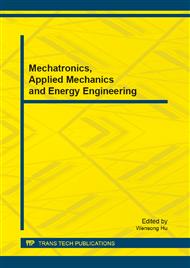p.509
p.515
p.521
p.526
p.531
p.536
p.540
p.546
p.554
Business-Task Coupled Process Management for Complex Product Simulation
Abstract:
Business process and professional simulation process are closely relative and alternate together for complex product simulation. This paper presents a business-task coupled process management method, which can implement integration management of business process and professional simulation process. Business-task coupled process is controlled by a multilayer workflow engine based on workflow technology. When the business process executes a task activity, the responding task process will be driven. The workflow engine controls every simulation activity in the task process. A simulation activity invokes one specified simulation tool and transfers data through a simulation component. The application result shows the validity of the method.
Info:
Periodical:
Pages:
531-535
Citation:
Online since:
September 2013
Authors:
Price:
Сopyright:
© 2013 Trans Tech Publications Ltd. All Rights Reserved
Share:
Citation:


